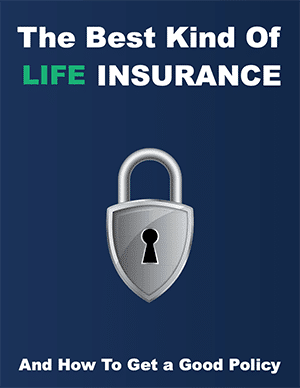702-660-7000
702-660-7000
Investment grade life insurance is commonly sold as a solution to avoid the non-diversifiable market risk associated with investing in the market. The problem is that investment grade life insurance is essentially a marketing gimmick. Here are the reasons why:
Plain and simple, according to the legal definition, life insurance cannot and should not be categorized as an investment.
An Investment-Grade Insurance Contract (IGIC) is a unique insurance policy that lets you grow your investment tax-free, and when you need to access the funds, you won’t be taxed on the withdrawals. Essentially, you get to grow your savings, benefit from compound interest, and only part with a minimal share for taxation.
Additionally, when passing this on to your beneficiaries, they won’t be taxed on the inheritance. This translates to no taxation during its growth, and no income tax on the death benefit for your beneficiaries.
While you can’t invest in insurance policies per say, that doesn’t mean they aren’t an asset to your financial well-being. Some life insurance contracts do provide a rate of return, or maybe more accurately a return beyond premiums paid.
When a premium is paid for a whole life insurance policy, the insurance company takes a flat fee from the premium for administrative costs, but the rest of the annual premium is invested in the portfolio of the insurance company and managed by the CFO of the company. In doing this, life insurance companies have historically earned more than a 4% rate of return annually and the policy guarantee rate is usually around the 4% level.
Whatever portion of their earnings based on the guaranteed policy rate which is remaining after subtracting all guaranteed operating expenses, commissions, and mortality costs (claims paid), is guaranteed to be credited to the policyholders as a cash value increase.
Any return that the life insurance company earns above and beyond the guaranteed values can be used to pay participating policyholders a dividend. These dividends can be used by the policyholder(s) to purchase more paid-up life insurance. Paid-up insurance can earn its own dividends for the rest of the policy’s lifetime creating a compounding effect. This compounding is why many mistakenly refer to whole life insurance as earning a rate of return. This is a misnomer as whole life insurance only provides a guaranteed cash value based on the guaranteed policy rate mentioned above, and if it is a participating policy, it can also earn dividends. But whole life insurance, by definition, never earns a rate of return and isn’t exposed to risk. And so, it can’t be classified as an investment or an investment grade life insurance policy.
What a good whole life policy does generate, is an internal rate of return or a discount rate, which makes the premiums and underwriting cost of the policy equal to zero at some point in the life of the contract. When this occurs in a whole life policy, it has effectively cost the owner nothing. This is what makes whole life insurance a good retirement savings strategy and a valuable income replacement option.
Once this discount rate or internal rate of return of the policy reaches zero, the annual guaranteed cash value increase on each annual premium paid can become impressive. For example, a 35-year-old male in standard health can pay a total of $53,068 in premiums by year 8 for a $475,000 life insurance policy. But in year 8, the insurance company guarantees that this policy will generate cash value that is 1.17% greater than the premiums paid for that year. By age 65, 30 years after this whole life policy was initiated, the life insurance contract guarantees that the annual premium of $4,267 will produce $7,970 of increased cash value, which is an 86.78% return on the annual premium payment for year 30.
Of course, the guaranteed cash values will have already exceeded the total premiums paid. Therefore, this whole life policy will now cost the policyholder nothing while they continue to profit from high returns on annual premiums paid for the rest of their life.
It has been said that term life insurance is better than whole life insurance because you can buy term and invest the difference between the cost of term insurance and whole life insurance.
Interestingly enough, insurance companies have capitalized on this typical financial advice by developing universal life insurance policies. Universal life insurance is a type of life insurance that buys term insurance and invests the difference. Many advisors call universal life insurance investment grade life insurance without the risk because the main purpose of universal life insurance is to overcome the risk(s) associated with investing.[iv]
Some universal life policies do have an investment component.
Premiums paid on universal policy are usually greater than the cost of purchasing term insurance initially, leaving a portion of the premiums paid to accumulate as cash value. This accumulated cash value earns a rate of return that mirrors an interest rate such as the Libor (London Interbank Offered Rate), or an index such as the S&P 500, or is actually invested in stock and securities. This investment component of universal life insurance is a speculation attempt to overcome the ever-increasing cost of the term insurance.
Unfortunately, most universal life insurance contracts fail to overcome the cost of the term insurance in the long-run. Candidly, this is the very reason the concept of buying term insurance and investing the difference can fail those who attempt it. You can read more about how Universal Life Insurance Works in this in depth article.
According to David Babble, professor of the Wharton School at the University of Pennsylvania, most people buy term and spend the difference[v]. And in universal life insurance, people end up buying a term based life insurance policy and end up spending the difference on the ever increasing costs of the underlying term, premium fees, and interest on policy loans, which diminishes what is, and isn’t, left for themselves or their loved ones.
In fact, “Lawsuits filed against insurers in recent years for their practices around universal life insurance policies highlight the risks universal life insurance products can pose to unwary financial advisers and clients.”[vi] One insurer paid out over $2.25 billion, and another $195 million, to settle lawsuits over their universal life insurance products. Remarkably, insurance industry observers believe this is just the beginning of problems for universal life insurance and the companies that issue these contracts.[vii] [viii]
But permanent participating whole life insurance is different than universal life insurance. Participating whole life insurance is built upon a level annual premium, instead of an ever-increasing annual premium like term and universal life insurance policies. This level annual premium allows for whole life insurance to develop equity, which is a cash equivalent that overcomes the cost of the total annual premiums paid for the life insurance policy. Read more about how whole life insurance works in this in depth article.
Knowing that there is a legally binding contract that guarantees all the premiums paid for a whole life insurance policy, plus any and all dividends earned, will be accessible to the whole life insurance policy holder before the policy is mature, or paid-up, means that the cost of whole life insurance is nothing over time. A whole life policy really becomes an asset rather than an expense, a financial tool instead of a financial liability, a guarantee versus a risk, all meaning a better deal for the policy holder.
Even though whole life insurance is not an investment, nor is it an investment grade life insurance contract, it still remains part of a sound investment portfolio. Not only does participating whole life insurance provide returns, both guaranteed and additionally through dividends while the insured is living, it also provides tax-free cash upon the death of the insured.
The cash value and equity that develop in participating whole life insurance can be leveraged or withdrawn while the insured is still living and can be used to invest, refinance, and/or create cash flow. When a whole life insurance policy is leveraged to access money via policy loan, the policy itself continues to grow and benefit from all the features of a policy that has not been leveraged or borrowed against. This adds additional value to participating whole life insurance about which most financial advisors and policyholders are unaware or misinformed.
To protect against loss of income, disability, interest costs, taxes owed on qualified retirement accounts, estate taxes, market risk, and even outliving one’s retirement savings, life insurance contracts provide a guaranteed solution.[xii]

Get a working knowledge of how each type of life insurance policy works.
After reading this 10-page booklet you'll know more about life insurance than most insurance agents.
Download here>
Schedule a strategy session with us today so that you can see a participating whole life insurance policy designed and prepared for you… not because life insurance is such a “good investment”, but because it is a great asset which continues to work and grow for you during and after your life.
Tom McFie is the founder of McFie Insurance and co-host of the WealthTalks podcast which helps people keep more of the money they make, so they can have financial peace of mind. He has reviewed 1000s of whole life insurance policies and has practiced the Infinite Banking Concept for nearly 20 years, making him one of the foremost experts on achieving financial peace of mind. His latest book, A Biblical Guide to Personal Finance, can be purchased here.  Tomas P. McFie DC PhD
Tomas P. McFie DC PhD
[i] https://texaslawhelp.org/article/understanding-life-insurance
[ii] https://www.google.com/search?q=define+invest&forcedict=invest&dictcorpus=en-US&expnd=1
[iii] https://texaslawhelp.org/article/understanding-life-insurance
[iv] https://www.investopedia.com/articles/insurance/09/indexed-universal-life-insurance.asp
[v] https://www.investmentnews.com/article/20150728/BLOG05/150729897/new-life-insurance-study-debunks-buy-term-invest-the-difference
[vi] https://www.investmentnews.com/article/20180919/FREE/180919910/universal-life-insurance-lawsuits-underscore-product-risk
[vii] https://www.investmentnews.com/article/20181004/FREE/181009958/transamerica-pays-195-million-to-settle-lawsuit-over-universal-life
[viii] https://www.vdlegal.com/why-some-policyholders-are-suing-their-universal-life-insurers/
[ix] https://www.daveramsey.com/recommends/term-life-insurance?gclid=EAIaIQobChMI757nt_325QIVVRx9Ch1Qog7vEAAYBCAAEgL6V_D_BwE
[x] https://www.thebalance.com/is-life-insurance-a-good-investment-357230
[xi] A Plain English Explanation to Help You Pass the Series 65 Exam, Robert M. Walker: January, 2019, pg 45
[xii] Ibid pg 55
Resources:
Read the Article on Investment Grade Life Insurance Comparison Here
Get the Tool: Internal Rate of Return (IRR) for Policy Values
Register for the: Jan 18th Workshop in Las Vegas